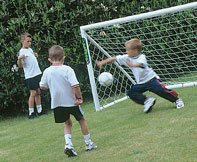Childhood obesity: the facts
Published 27/07/17Recently the Health Alliance stated that the UK needs to be tougher in tackling childhood obesity. The need to tackle childhood obesity is not just vital for ensuring that children grow up healthy and fit, but also ensures that the NHS doesn’t become financially stretched due to an increasing obese UK population. Saying this, childhood obesity is not just a UK problem, as the World Health Organisation has declared it one of the most serious public health challenges of the 21st Century. In the UK obesity is determined by a child’s BMI, which takes into consideration weight and height. While this form of measuring has been criticised by some, mainly due to the fact that it doesn’t take into account body fat percentages and muscle weight (which for adults can result in top athletes being technically classified as obese), it is still considered the best way to determine the obesity levels. Recent figures have suggested that in the UK the numbers of obese children, which have been increasing since records started being kept in 1995, have started to level off. While this is a positive move and shows the work being done to educate adults and children about health are making an impact, the majority of health professionals agree that the current rate of 1 in 3 children are either overweight or obese is too high. It was during the 1990s that childhood obesity rates first began to be taken seriously. During the 1980s in the UK 5 per cent of children were considered overweight, while 2 per cent were classified as obese, however within a decade these numbers had doubled and continued to increase to the obesity levels we have today.
What can schools do to tackle childhood obesity?
The main causes for obesity is a combination of an inactive lifestyle coupled with a diet of processed foods. Many health organisations are constantly pressuring the government to do more to ensure that the foods available reduce the amount of salt and sugar they include, as well as to retain the traffic light system on packaging once the UK leaves the European Union. Schools can take an active role in educating children about the food they eat and how to read the traffic light system on packaging so that they understand what they are consuming. As well as this, school can ensure that the food served to children during lunch time are nutritionally rich and provide a healthy balance of carbohydrates, protein and vegetables. Along with encouraging healthy diets, schools can also encourage children to be as active as possible when in the playground. Installing playground equipment that enables children to be active in a fun way is a key way of encouraging children to be active. As well as this, adding equipment that promotes physical challenges, such as climbing o
r balancing, can also help to ensure children get the exercise they need to burn off extra calories during the day. Research has shown that children aged 11-15 are more likely to be overweight or obese compared to younger children, however children in all age groups and all social backgrounds can be overweight or obese. The good news is that with the right education and support, an obese child is able to achieve a healthy

weight and grow up into a healthy and fit adult.




